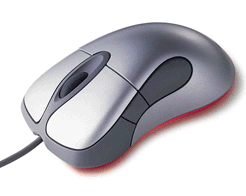| Ergo Basics - Tools |
Facilitating Change - Possible Answers |
| Why do people resist change? | |
| Fear change | Fear of the unknown can be a powerful motivator to not change. |
| Do not recognize the need for change | Scope of the issue has not reached a threshold where it causes them problems. |
| Do not know how to accomplish change | Change requires additional training and skills that the person may not have |
| Was not their idea | Change is forced on people, they had little or input regarding the change. |
Habit | Habits are incredibly strong, we may recognize the need to change but tend to revert back to the old way of doing it. |
| No one else is changing | Peer pressure is tough to overcome, it is difficult to be the only one making the change. |
How can change be facilitated? |
The old saying, "Success breeds success!" is very apropos when we talk about how to facilitate change. How to accomplish success is the primary question. Change is all about learning how to modify our behavior. Here is a step-by-step process with an example | |
Steps | Example |
| Step One - Dissatisfaction, a Problem | Constant switching back and forth between mouse and keyboard |
If the person doesn't recognize there is a problem in the first place, why should they change? They must recognize their dissatisfaction and be willing to do something about it. Here is where relevant information and training is critical. Use the web site to learn more about ergonomics principles and applications. |  A common problem with computer users, it can result at a minimum in a decrease in productivity and more seriously increase the potential for a musculoskeletal disorder. A common problem with computer users, it can result at a minimum in a decrease in productivity and more seriously increase the potential for a musculoskeletal disorder. |
| Step Two - Select New Behaviors | Keyboard shortcuts in place of mouse use are available for almost all functions |
| The person must become aware of and be willing to try out changes. In the final essence, motivation comes from within the person. | Go to the Help Menu, type in "keyboard shortcuts" and print out a list of them. |
| Step Three - Practice New Behaviors | Select the Top Five current mouse functions |
| Opportunities to practice the new behaviors is the next step. Practice needs to be done with reasonable correctness. Vince Lombardi said it well, "Practice doesn't make perfect - perfect practice makes perfect." | Identify the five most common reasons you use the mouse. Learn the keyboard shortcuts and start to use them in place of the mouse. |
| Step Four - Get Evidence on the Results | Fine tune shortcut use |
Getting feedback on the results of the new behavior let the person know how they are doing; what is working and what is not and how to change the "practice" based on the feedback. | Over the next 30 days fine tune your use of the shortcuts - you will find some that are very efficient and in other cases it will make more sense to still use the mouse. |
| Step Five - Generalize, Apply and Integrate | Integrate shortcut use |
| At this stage in the process the person recognizes the behavior change works. They will integrate this new behavior into the overall scheme of things. In other words, the new behavior becomes the accepted and "normal" behavior. | You have now made the keyboard shortcuts an on-going part of your computer use. It has become the normal way of "doing business." Your efficiency has improved and you have reduced the likelihood of developing a musculoskeletal disorder. |
| Step Six - Continue the Process | Look for other examples |
| To make the steps into a true never-ending process identify new dissatisfactions and continue on. | Use web site to learn more ways to help you at work and at home. |